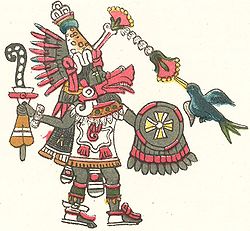Charles Hutchins Hapgood was an American college professor and author who became one of the best known advocates of the pseudo-scientific claim of a rapid and recent pole shift with catastrophic results.

Erich Anton Paul von Däniken is a Swiss author of several books which make claims about extraterrestrial influences on early human culture, including the best-selling Chariots of the Gods?, published in 1968. Von Däniken is one of the main figures responsible for popularizing the "paleo-contact" and ancient astronauts hypotheses.
Pseudoarchaeology—also known as alternative archaeology, fringe archaeology, fantastic archaeology, cult archaeology, and spooky archaeology—is the interpretation of the past by people who are not professional archaeologists and who reject or ignore the accepted data gathering and analytical methods of the discipline. These pseudoscientific interpretations involve the use of artifacts, sites or materials to construct scientifically insubstantial theories to strengthen the pseudoarchaeologists' claims. Methods include exaggeration of evidence, dramatic or romanticized conclusions, use of fallacious arguments, and fabrication of evidence.

Ancient astronauts refer to a pseudoscientific set of beliefs which holds that intelligent extraterrestrial beings visited Earth and made contact with humans in antiquity and prehistoric times. Proponents suggest that this contact influenced the development of modern cultures, technologies, religions, and human biology. A common position is that deities from most, if not all, religions are extraterrestrial in origin, and that advanced technologies brought to Earth by ancient astronauts were interpreted as evidence of divine status by early humans.

Chariots of the Gods? Unsolved Mysteries of the Past is a book written in 1968 by Erich von Däniken and translated from the original German by Michael Heron. It involves the hypothesis that the technologies and religions of many ancient civilizations were given to them by ancient astronauts who were welcomed as gods.

Graham Bruce Hancock is a British writer who promotes pseudoscientific theories involving ancient civilizations and hypothetical lost lands. Hancock speculates that an advanced ice age civilization was destroyed in a cataclysm, but that its survivors passed on their knowledge to hunter-gatherers, giving rise to the earliest known civilizations of ancient Egypt, Mesopotamia, and Mesoamerica.
The cataclysmic pole shift hypothesis is a pseudo-scientific claim that there have been recent, geologically rapid shifts in the axis of rotation of Earth, causing calamities such as floods and tectonic events or relatively rapid climate changes.

Pyramidology refers to various religious or pseudoscientific speculations regarding pyramids, most often the Giza pyramid complex and the Great Pyramid of Giza in Egypt. Some "pyramidologists" also concern themselves with the monumental structures of pre-Columbian America, and the temples of Southeast Asia.
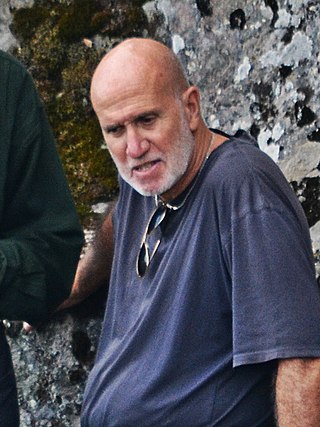
Robert Bauval is an Egyptian writer and lecturer, perhaps best known for the fringe Orion Correlation Theory regarding the Giza pyramid complex.
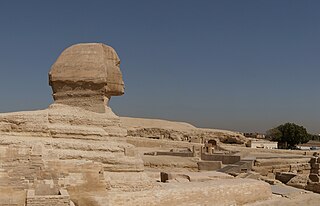
The Hall of Records is a purported ancient library that is claimed to exist underground near the Great Sphinx of Giza in Egypt. The concept originated with claims made by Edgar Cayce, an American who claimed to be clairvoyant and was a forerunner of the New Age movement. He said in the 1930s that refugees from Atlantis built the Hall of Records at Giza to preserve their knowledge. Cayce's assertions had many precursors, particularly the pseudohistorical theories about Atlantis that Ignatius Donnelly promulgated in the late 19th century, as well as claims about hidden passages at Giza that date back to medieval times.

There are several hypotheses about real-world events that could have inspired Plato's fictional story of Atlantis, told in the Timaeus and Critias. While Plato's story was not part of the Greek mythic tradition and his dialogues use it solely as an allegory about hubris, researchers have speculated about real natural disasters that could have served as inspiration. Additionally, many works of pseudohistory and pseudoarchaeology treat the story as fact, offering reinterpretations which tie to national mysticism or theories of ancient aliens. While Plato's story explicitly locates Atlantis in the Atlantic Ocean beyond the Pillars of Hercules, location hypotheses include Helike, Thera, Troy, and the North Pole.
Edmund Kiss was a German pseudoarchaeologist and author best known for his books about the ancient settlement of Tiwanaku in the Andes mountains of Bolivia.
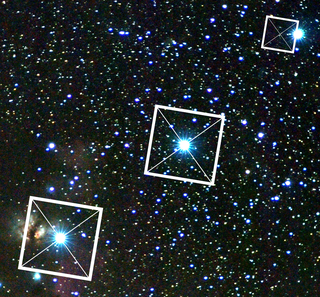
The Orion correlation theory is a fringe theory in Egyptology attempting to explain the arrangement of the Giza pyramid complex.
Alan F. Alford, was a British writer and speaker on the subjects of ancient religion, mythology, and Egyptology.
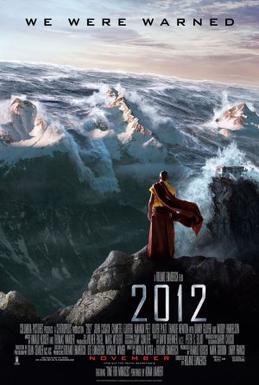
2012 is a 2009 American science fiction disaster film directed by Roland Emmerich, written by Emmerich and Harald Kloser, and stars John Cusack, Amanda Peet, Chiwetel Ejiofor, Oliver Platt, Thandiwe Newton, Danny Glover and Woody Harrelson. Based on the 2012 phenomenon, its plot follows geologist Adrian Helmsley (Ejiofor) and novelist Jackson Curtis (Cusack) as they struggle to survive an eschatological sequence of events including earthquakes, volcanic eruptions, megatsunamis, and a global flood.

Ancient Aliens is an American television series produced by Prometheus Entertainment that explores the pseudoscientific hypothesis of ancient astronauts in a non-critical, documentary format. Episodes also explore related pseudoscientific and pseudohistoric topics, such as: Atlantis and other lost ancient civilizations, extraterrestrial contact and ufology, and popular conspiracy theories. The series, which has aired on History since 2010, has been a target for criticism of History's channel drift, as well as criticism for promoting unorthodox or unproven hypotheses as fact. According to Smithsonian, episodes of the series overwhelm the viewer with "fictions and distortions" by using a Gish gallop.

The Mysterious Origins of Man is a pseudoarchaeological television special that originally aired on NBC on February 25, 1996. Hosted by Charlton Heston, the program presents the fringe theory that mankind has lived on the Earth for tens of millions of years, and that mainstream scientists have suppressed the fossil evidence for this. Some material included was based on Forbidden Archeology, a book written by Hindu creationists Michael Cremo and Richard L. Thompson about anomalous archeological finds reported mainly in early scientific journals. The film covers topics such as The Paluxy tracks, the Zuiyo-maru carcass, the Missing Link, the Java Man, Lucy, Tiwanaku, Stonehenge, the Giza pyramids, the Piri Reis map, Atlantis, and the Pole shift hypothesis.

The HAB Theory is a 1976 science fiction novel by American author Allan W. Eckert. The novel is from the apocalyptic fiction subgenre. Eckert believed that the real-world facts and conclusions he quoted in the novel, were worthy of further exploration. One such conclusion was that hyper-specialization in the physical sciences was a big problem and that more interactions between hyper-specialists was overdue. He wove facts and concepts into the novel form, then his 17th book, to get more minds considering them. The book explores a version of pole shift hypothesis postulated by Professor Charles Hapgood in two volumes, plus the 1967 book Cataclysms of the Earth by Hugh Auchincloss Brown.
Rand Flem-Ath is a Canadian librarian and author known for his numerous books about the lost continent of Atlantis and the theory of Earth Crustal Displacement. His views are influenced by Charles Hapgood and in turn influenced Graham Hancock's Fingerprints of the Gods.

Magicians of the Gods: The Forgotten Wisdom of Earth's Lost Civilisation is a 2015 book by British pseudoarchaeology writer Graham Hancock, published by Thomas Dunne Books in the United States and by Coronet in the United Kingdom. Macmillan Publishers released an "updated and expanded" paperback edition in 2017.

